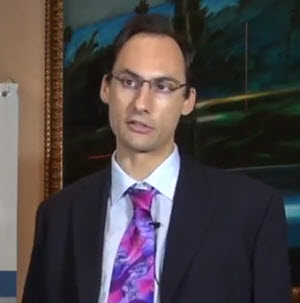The Avoiding Surprises: understanding the impact of the Deepwater Horizon oil spill on the decision making behaviors of fishers and how this affects the assessment and management of commercially important fish species in the Gulf of Mexico using an agent-base project is lead by Steven Saul, Arizona State University.

Researcher Steven Saul
The Deepwater Horizon oil spill disrupted the livelihoods of many individuals living along the coast of the Gulf of Mexico, ranging from those in the tourism industry to those who fish the Gulf’s waters for a living. Many of those in the fishing industry, and the sectors that depend on it had to modify their operations (i.e. alter their fishing locations, target species, gear used, or trip duration) in the months after the spill due to spatial closures restricting access to potentially polluted waters. Some of the fishing effort during this time was redirected towards assisting with the cleanup efforts associated with the oil spill. This re-tasking had a direct effect on fishing catch and effort in 2010, and perhaps beyond, depending on whether behaviors that were modified due to the oil spill were maintained in the years ahead or if there was a return to the original behavioral patterns that existed before the incident.
To assess the status of commercially important fish stocks in the Gulf of Mexico, the National Marine Fisheries Service relies heavily on information on fish catch and fishing effort that is compulsorily provided by the fishing industry to the government. This information is used to estimate trends in fish abundance over time and serves as inputs to tune the fish population models that are used to establish fishing regulations, such as annual catch limits. At the present time, it is not well understood how the oil spill closures affected the catch of fish and the amount of time/effort fishers needed to use to catch those fish. As a result, it has been difficult for the National Marine Fisheries Service to use the 2010 year of data as a proxy for the trends in abundance that year due to the substantial behavior changes that occurred in the fishing fleet. A biased index of abundance could affect the abundance estimates and the estimated catch limit trajectories stock assessment models provide for future years, as recruitment in future years is dependent on the biomass available in previous years, which is in turn, affected by the fishing mortality that year. Such biases could result in socioeconomic losses to the fishing community by either triggering unnecessary reductions in catch, or conversely increases in catch under conditions where biomass is actually reduced.
To improve our understanding of these dynamics, the goal of this project is to develop a spatially explicit bioeonomic model of some the most important commercial fishery species and the fleets that harvest them in the Gulf of Mexico. The project continues the work initiated by the PI and his collaborators, whom have developed a spatially explicit model for the West Florida shelf that incorporates the behavior of four reef fish species (red grouper, gag grouper, red snapper and mutton snapper) and two commercial fishing fleets (handline and longline) (1). The new proposed model will extend the geographical scope of the current model to the entire US shelf of the Gulf of Mexico, will include additional species (brown shrimp, pink shrimp and menhaden) and two new fishing fleets (shrimp trawlers and menhaden purse seiners). Additionally the model will be modified to incorporate the direct effects of oil pollution on the survival of adult fish and shrimp and the reduction in recruitment caused by impacts of oil on spawner fitness and larval survival. In addition to understanding fleet dynamics, the model will also be used to evaluate long term responses of these populations to the disturbances caused by the oil pollution and by the imposition of fishing closures. Alternative responses to the spill will also be evaluated to understand the scope of the possible effects of different sizes of oil spills on the recovery of these populations.
Click for access to GoMRI’s YouTube videos of RFP-V Projects…
************
This project was funded by the Gulf of Mexico Research Initiative (GoMRI) in the RFP-V funding program.
The Gulf of Mexico Research Initiative (GoMRI) is a 10-year independent research program established to study the effect, and the potential associated impact, of hydrocarbon releases on the environment and public health, as well as to develop improved spill mitigation, oil detection, characterization and remediation technologies. An independent and academic 20-member Research Board makes the funding and research direction decisions to ensure the intellectual quality, effectiveness and academic independence of the GoMRI research. All research data, findings and publications will be made publicly available. The program was established through a $500 million financial commitment from BP. For more information, visit http://gulfresearchinitiative.org/.
